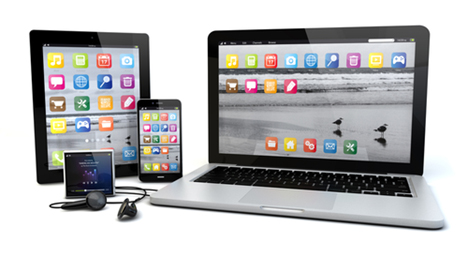The Dealership Visit Actually Begins Here

By subscribing, you agree to receive communications from Auto Remarketing and our partners in accordance with our Privacy Policy. We may share your information with select partners and sponsors who may contact you about their products and services. You may unsubscribe at any time.
WESTLAKE VILLAGE, Calif. and CHICAGO –
The more time someone spends on the Web during the car-shopping process, the more dealerships they are likely to visit.
That’s according to the J.D. Power 2014 New Autoshopper Study released Tuesday, which examines the use of digital devices (computers, smartphones and tablets), websites and apps during the car-shopping and research process.
On average, what J.D. Power calls “automotive Internet users” are shopping on the Web for nearly 14 hours prior to buying a car.
Those who spend 12 or more hours on the Internet end up visiting an average of 3.3 dealers prior to buying.
Shoppers who shop the Internet between five and 11 hours visit an average of 2.5 dealers; those who spend between one and four hours online visit an average of only two stores.
“There may be a notion in the marketplace that the more auto shoppers use the Internet to determine which vehicle to buy, the fewer dealers they are inclined to shop, yet we see just the opposite,” said Arianne Walker, senior director of automotive media and marketing at J.D. Power.
Subscribe to Auto Remarketing to stay informed and stay ahead.
By subscribing, you agree to receive communications from Auto Remarketing and our partners in accordance with our Privacy Policy. We may share your information with select partners and sponsors who may contact you about their products and services. You may unsubscribe at any time.
“New-vehicle buyers who do a great deal of automotive Internet shopping also go to more dealerships to shop,” Walker added.
But they might not call or email you ahead of time, according to a similar study commissioned by Cars.com.
The study — titled “The Digital Influence: How Online Research Keeps Auto Shoppers in Control” and conducted by C+R Research — found that just half of car shoppers tend to contact the dealership before they stop by.
Most shoppers said “they felt (contacting the store) was unnecessary given the information available online,” the companies said in a summary of the findings.
“Digital platforms give shoppers the tools and knowledge to communicate when and how they choose, allowing them to control the dialogue with dealerships on their own terms," said Simon Tiffen, senior manager of advertiser insights at Cars.com.
“It’s why only half of consumers contact a dealership before making a visit; there's often little incentive when similar information is available from independent sources online,” Tiffen added.
That said, the dealership visit itself remains quite important.
“Not surprisingly, the dealer visit still ranks highly as a resource for auto shoppers. While consumers can find more information than ever online, nothing replaces the tactile experience of seeing, touching and test-driving a car, all of which helps tap into the emotional aspect of making such a significant purchase,” the Cars.com/C+R Research study indicates.
“But one of the challenges for dealers is that there’s so little they have control over before a shopper makes the decision to visit the dealership,” the analysis continues. “Consumers used to rely heavily on the dealer visit to learn more about a particular car. Now, with online sources and mobile devices placing so much information at their fingertips, consumers feel educated and confident before they ever set foot in a dealership.
“The result is that shoppers are visiting fewer dealerships, and those visits are overwhelmingly driven by online influences.”
The Cars.com/C+R Research study suggests that a fifth of shoppers visit one dealership, with a quarter visiting two.
Further emphasizing the relationship between the Web and the dealership visit, the study points that online sources (online searches, dealer websites and independent research sites) were chosen by more than two-thirds (68 percent) of in-market shoppers and recent purchasers to find a dealership. Outdoor ads (9 percent) and radio advertisements (8 percent), for instance, were significantly less popular, the study said.
Last month, Auto Remarketing also examined the topic of the dealership visit as part of an interview with AutoTrader.com's Isabelle Helms, who discussed findings from a similar study by her company that honed in largely on the Millennial generation — including what Generation Y finds most important about the dealership visit.
Editor's Note: The J.D. Power study was fielded between Feb. 25 and July 9, and the data in it was derived from the responses of more than 15,300 purchasers and lessees of new 2012 to 2014 model-year vehicles who gathered information digitally while shopping, the company said in its press release.
Meanwhile, the Cars.com/C+R Research study used responses from more than 1,000 in-market shoppers and recent automotive purchasers that were generated between April 30 and May 9. They included a mix of buyers/shoppers of new and used vehicles.


